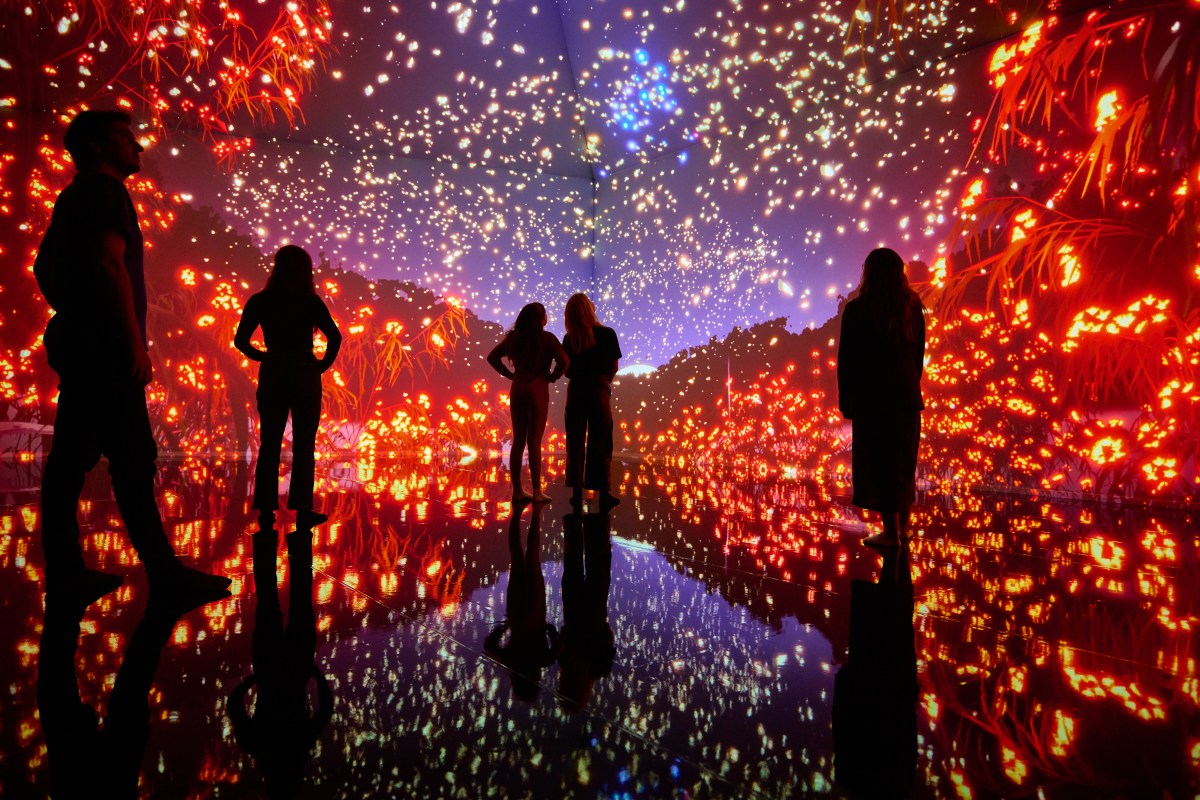‘This is a timed exhibition that will take between 25 to 40 minutes to experience’, the museum staffer explains to our group of no more than 20 visitors as we wait eagerly to be ushered into the exhibition, Tyama (pronounced Chah-muh): A deeper sense of knowing, currently showing at the Museum of Victoria.
Developed by Museums Victoria specifically for the Melbourne Museum, Tyama, is the indigenous word for ‘knowing’ and explores the world around us through a First People’s lens; the exhibition combining Indigenous wisdom and ways of knowing and embodying the natural world with Western notions of science and pedagogy. The result, an immersive, sensory experience unlike anything the museum has yet attempted.
We enter a small, cave-like room. It is dark except for the bright flowing light of concentric circles around which we gather while children run joyously to the circle’s epicentre, momentarily alight, little beacons of hope for a future generation and our planet. A recorded voice that draws from the oral story-telling tradition, explains the focus of the exhibition.
Consisting of six carefully created environments designed to respond to our movements and sounds, we suddenly find ourselves characters in a recreation of the natural world unfolding around us: the three protagonists in this play of life, the moth, bat and the fish introducing us to an experience of those imperceptible processes, not picked up by the human senses, but occurring in nature constantly.
Immersive animation and sound environments developed using artificial intelligence (AI) recreate the natural world, allowing us to follow the UV light, like a moth in search of the nectar on which it feeds or experience sound like the bat when we clap our hands and see waves ripple across walls; the echolocation on which this animal relies to navigate its way around.
We join a school of fish through the movement of our bodies and gain some understanding of the importance of this spatial sensitivity as a means of reproduction and survival.
Discreetly dotted throughout the exhibition are small alcoves housing creatures from the museum collection accompanied by minimal text labels with interesting snippets of information related to the protagonist of focus.
Past a spiralling kelp forest, we enter into the final act of this play; a larger space housing a 27 metre-long screen which wraps itself around the walls, capturing the song lines of the southern right whale. Accompanying the imagery is a looped audio recording narrated by Yaraan Bundle, member of the Gunditjmara and Yuin Nations, who brings to life the creation story of this amazing animal. It’s a good place to finish.
Beyond this point, a reflective passageway leads us to a small space of interpretive material and objects, supporting and extending the visitor experience. The participant is also able to gain more information on the exhibition content through the use of a QR code. A map on the museum website Tyama Adventure Trail, allows people to expand further on their experience and discover related animals, objects and themes across the museum that have been explored in the exhibition.
Although creators of the exhibition have clearly been mindful of inclusivity, this exhibition may not be suitable for all visitors such as those with photosensitivity. Visitors with wheelchairs and prams may also find some limitations to their experience. Multilingual guides are available.
Read: Theatre review: Future.Joy.Club.
A mindfully developed exhibition that artfully combines the aims of contemporary museums as places of learning through enquiry-based pedagogy and multi-sensory experiences as well as places of entertainment.
Tyama
Melbourne Museum
Tickets: $12-$30
Tyama will be on display until 29 January 2023





